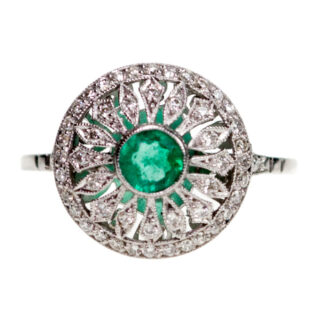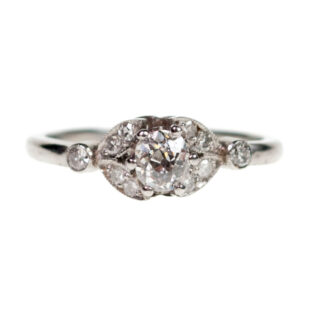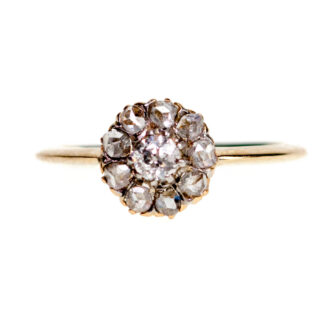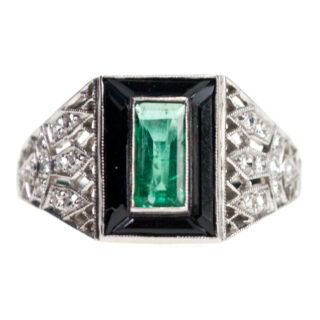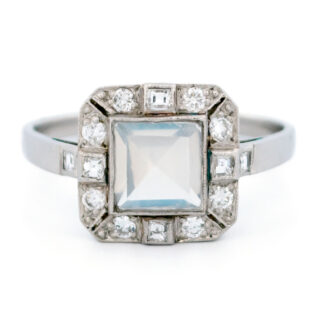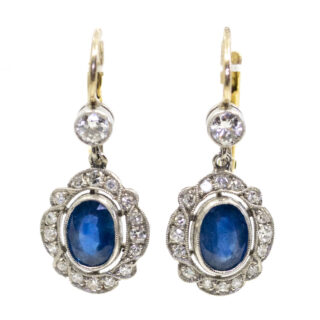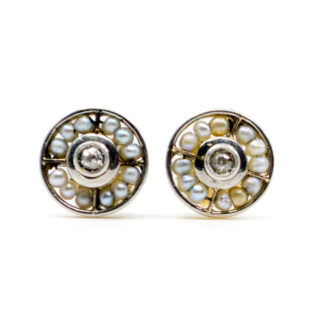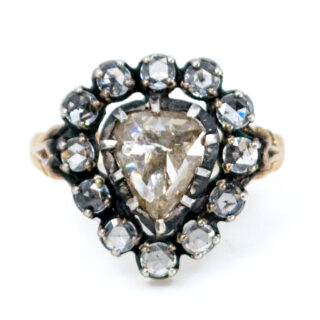This lovely ANTIQUE SCOTTISH THISTLE KILT PIN brooch features scottish agate and citrine, beautifully crafted in 9k. William Henry Leather Chester 1900.
Details: Scottish Agate, Citrine, 9k Brooch, William Henry Leather Chester 1900 *.
Dimensions: 80 x 11 mm.
Weight in grams: 11,9.
Condition: Good condition – used with some signs of wear.
Shipping and Pickup: This lovely piece ships from our store located in the center of Amsterdam, The Netherlands. We offer both registered shipping and local pickup at our store. In the case of local pickup, any applicable shipping costs will be refunded.
About Us: Add some sparkle to your style with Binenbaum.com. We offer a stunning selection of antique and vintage jewelry that you won’t find anywhere else. From timeless rings and dazzling necklaces to unique brooches, we have something for every taste and occasion. Visit our website today and treat yourself to a piece of history.
| Design Era | |
|---|---|
| Design & Historical Context | The Late Victorian or Aesthetic period was a time of great cultural and artistic flourishing in Europe and the United States, and this was reflected in the jewelry of the time. The Aesthetic movement, which emphasized beauty and art for art's sake, was particularly influential on jewelry design during this time. Late Victorian or Aesthetic period jewelry is known for its intricate detailing and use of precious materials such as gold, silver, and diamonds. It often featured motifs such as flowers, animals, and nature scenes, and was inspired by a variety of cultural movements, including the Arts and Crafts movement, which sought to return to traditional craftsmanship and natural materials. One of the most distinctive features of Late Victorian or Aesthetic period jewelry is its emphasis on the use of enamel. Enamel is a type of glass-like material that is fused to a metal surface, and it was often used to add color and detail to jewelry. The French firm, Cartier, was particularly known for its use of enamel in its Late Victorian or Aesthetic period pieces. Late Victorian or Aesthetic period jewelry remains popular and is highly collectible to this day. It is often associated with the elegance and refinement of the time period, and is often seen as a symbol of wealth and sophistication. |
| Key Materials | |
| Materials & Craftsmanship | Agate Agate is a type of gemstone that is formed from silicon dioxide, the same mineral that forms quartz. It is a type of chalcedony, a microcrystalline form of quartz that is known for its banded or striped patterns. Agate is named after the Achatus river in Sicily, where it was first discovered as early as 300 BC. Agate is known for its beauty and versatility, and it has been used in jewelry and decorative objects for thousands of years. It comes in a wide range of colors and patterns, from solid, uniform colors to intricate banded patterns that can resemble stripes, clouds, or other natural formations. Agate is often polished and shaped into cabochons (smooth, convex gems with a flat base) or cut into beads, tumbled stones, and other decorative objects. Agate is found in many parts of the world, including Brazil, Uruguay, the United States, and Europe. The major lapidary center for agate in Europe is Idar-Oberstein, Germany, which is known for its expertise in cutting and polishing agate and other gemstones. Today, agates from Brazil and other locations are imported to Idar-Oberstein and other lapidary centers around the world, where they are cut and polished into beautiful gemstones. Citrine Citrine is a variety of quartz that is yellow to golden in color and is colored by trace elements of iron. It is named after the French word "citron," which means "lemon." The color of citrine closely resembles the color of yellow topaz, which is more expensive, and as a result, citrine is sometimes marketed under various misnomers such as "Madeira topaz," "Bahia topaz," and "topaz quartz." Today, citrine is often actually amethyst that has been heated to a temperature of approximately 900 degrees Fahrenheit (around 450 to 480 degrees Celsius). This process creates a stable golden to yellow color that can be restored to its original color upon irradiation. Citrine is the second most coveted variety of quartz after amethyst. It is prized for its beautiful yellow to golden color and is often used in a variety of different types of jewelry, including rings, earrings, pendants, and bracelets. It is also believed to have various healing properties and is sometimes used in traditional medicine. It is thought to have calming and balancing effects, and is sometimes used in meditation practices. 9k 9 karat gold is an alloy made up of 37.5% pure gold and 62.5% other metals, such as copper, silver, or zinc. The addition of other metals allows for the creation of gold in various colors, including yellow, white, and rose. 9 karat gold is a common choice for jewelry as it is less expensive than higher karat gold, due to the lower percentage of pure gold in the alloy. 9 karat gold is also slightly harder and more durable than pure gold, making it more resistant to scratches and dents. |
| Dimensions | 80 x 11 mm |
| Gender | |
| Weight (in grams) | 11,9 |
| Condition |
Enhance the Beauty of Your Jewelry with Proper Care
Wearing your jewelry is a special way to express yourself and add a touch of personal style to any look. However, to ensure your jewelry remains in pristine condition, there are a few simple steps you need to take to keep it looking its best.
General Care Instructions:
Remove jewelry when showering or bathing, especially when at the beach, in the sea or in chlorinated water.
Avoid wearing jewelry while doing physical work such as housekeeping, gardening or exercise.
Storing your jewelry in a dry and cool place will help protect it from moisture, dirt and dust.
Keeping it away from harsh chemicals such as bleach, ammonia and chlorine will help to avoid discoloration and damage.
Cleaning your jewelry regularly with a soft cloth will help to keep it looking shiny and new.
Avoid exposing your jewelry to extreme temperatures, such as leaving it in direct sunlight or near a heater, as this can cause damage.
Handle your jewelry carefully and avoid dropping it, as this can cause the stones to loosen or the metals to scratch.
Finally, if possible, have your jewelry professionally checked and serviced. This will ensure that any potential problems are spotted and fixed before they become worse.
By following these tips, you can enjoy your precious jewelry for many years to come.
Related products
-
Emerald Diamond Platinum Cluster Ring 6903-4869
€ 2.995,00 VAT incl. (where applicable) -
Diamond Platinum Ring 4496-4668
€ 2.695,00 VAT incl. (where applicable) -
Diamond 14k Cluster Ring 6898-1835
€ 1.395,00 VAT incl. (where applicable) -
Diamond Emerald Onyx Platinum Deco Ring 7339-4900
€ 3.895,00 VAT incl. (where applicable) -
Moonstone Diamond Platinum Square-Shape Ring 4489-4682
€ 2.995,00 VAT incl. (where applicable) -
Diamond Sapphire Platinum 18k Pendant Earrings 4503-4685
€ 3.795,00 VAT incl. (where applicable) -
Diamond Pearl 18k Cluster Earrings 8277-1998
€ 695,00 VAT incl. (where applicable) -
Diamond 14k Silver Pear-Shape Ring 6908-7020
€ 4.495,00 VAT incl. (where applicable)
- Home
- Collection
- Fine Jewelry
- Silver Jewelry
- Silverware
- Boxes
- Candlesticks
- Salt and pepper shakers
- Miniatures
- Salt cellars
- Spoon Set
- Condiments
- Frames
- Napkin Ring
- Spoon
- Oddities
- Cups
- Vases
- Cutlery
- Serving Spoon And Cake Server
- Candlesticks
- Baskets
- Hanukkiah
- Spice Tower
- Yad
- Tea Set
- Sugar Castor
- Napkin Rings
- Wine Bottle Coaster
- Wine Stopper
- Tea Pot
- Jugs
- Rattles
- Hip Flask
- Miscellaneous
- Rings 💍
- About
- Contact








